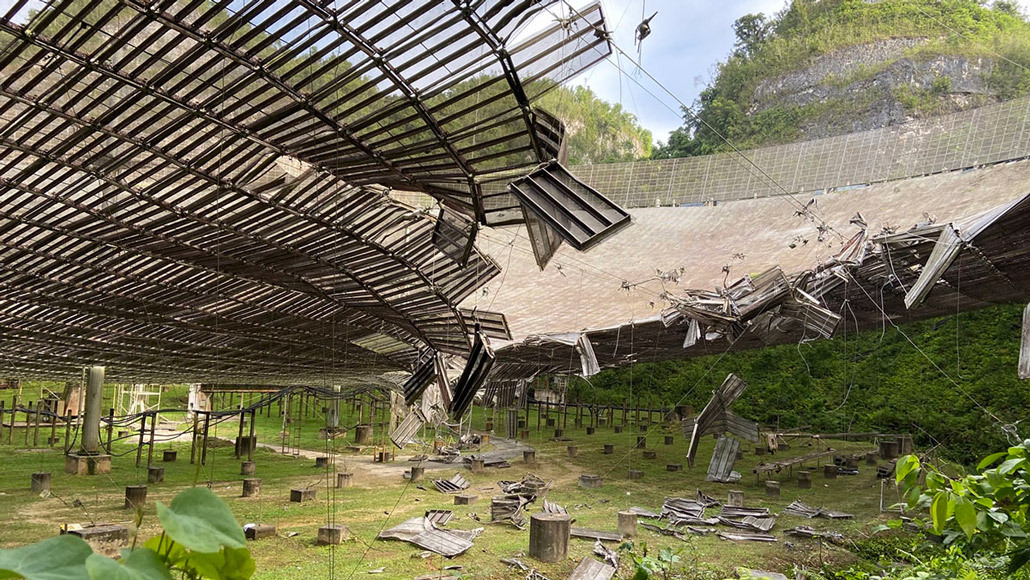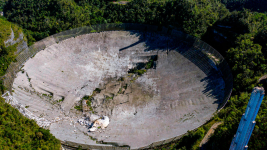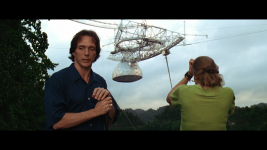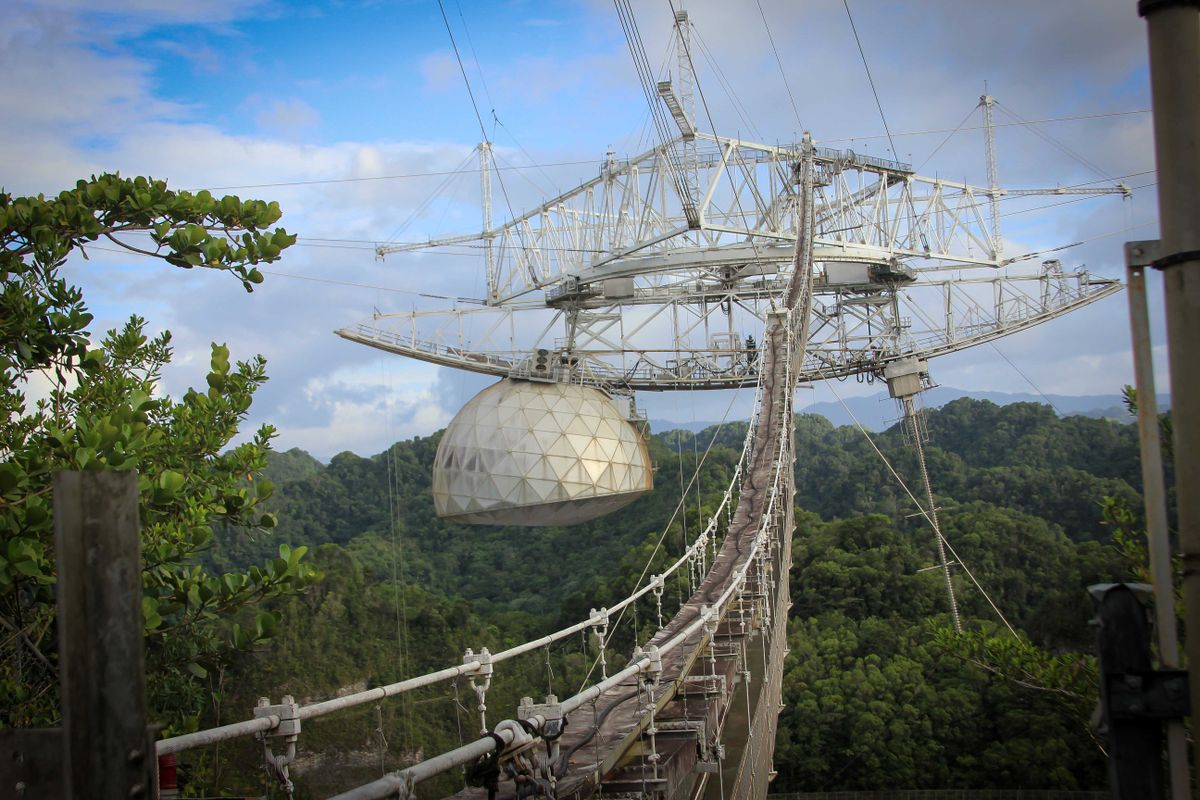Seldom Bucket
Well-Known Member
Arecibo’s days are done. After two support cables failed in recent months, the radio observatory’s 305-meter-wide dish is damaged beyond repair, the National Science Foundation announced on November 19. It will be decommissioned and dismantled.
“It’s a death in the family,” says astronomer Martha Haynes of Cornell University, who has used the telescope in Puerto Rico to study hydrogen in the universe since she was fresh out of college in 1973. “For those of us who use Arecibo and had hoped to use it in the future, it’s a disaster.”
The telescope, famous for appearances in movies like GoldenEye and Contact, consists of a wide dish to collect radio waves from space and focus them into detectors housed in a dome suspended above the dish. In August, one of the cables that holds up the dome slipped out of a socket and punched a hole in the dish.
The NSF and the University of Central Florida, which manages the telescope, had plans to repair the cable, Haynes said. But then a second cable unexpectedly broke on November 6. If a third cable were to break, it could send the platform holding up the dome swinging, or the whole structure could collapse.

Arecibo Observatory, an ‘icon of Puerto Rican science,’ will be demolished
The telescope, known for cameos in moves like Contact and for fast radio burst observations, was feared to be on the verge of collapse.




